- HOME
- Arthritis in Dogs
Dog Arthritis Help: Reduce Joint Pain and Improve Movement

Spotting arthritis in dogs often starts small: slower movement, hesitation before jumping. That stiffness or dog joint pain means arthritis likely arrived. What symptoms of arthritis in dogs should you watch for? Early signs like lameness in dogs or dog stiffness after rest often indicate joint deterioration. And which treatment options for dog arthritis actually help? Let's cover the key signs and solutions.
🐾 quick tour of the blogpost:
- What is arthritis in dogs?
- Causes and risk factors of arthritis in dogs
- Arthritis in dog breeds
- Recognizing the symptoms and signs of arthritis in dogs
- Progression of dog arthritis
- Dog arthritis diagnosis
- Veterinary treatment
- Advancements in arthritis treatment options
- Innovative trends in managing dog arthritis
- Veterinary physical rehabilitation therapies
- Therapies at home - diy
- Personal stories of dog owners
- The best advice for arthritis in dogs
What is Arthritis in Dogs?
Arthritis in dogs usually means their joints are wearing down and inflamed. It causes pain, stiffness, and makes it harder for them to move [1]. Most cases fall into two main types.
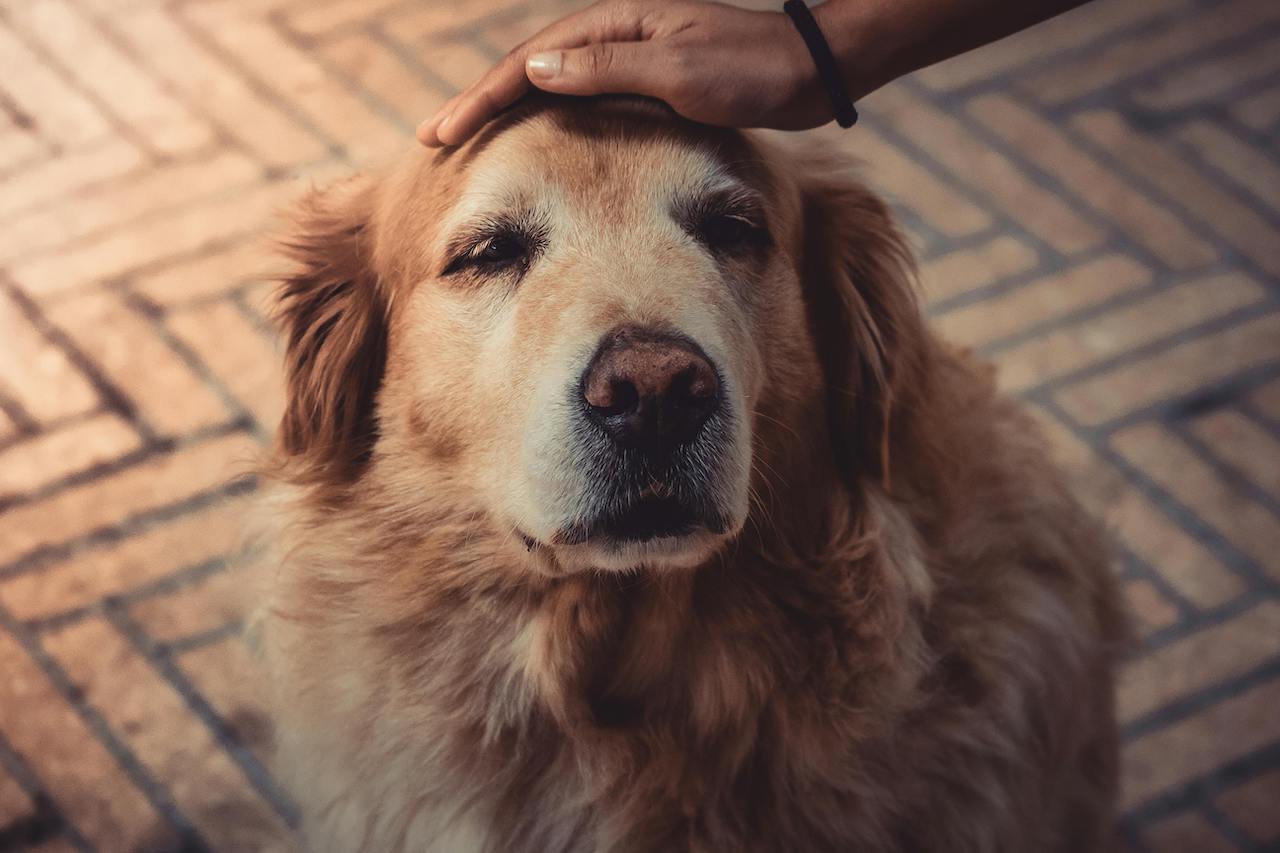
Osteoarthritis
Osteoarthritis, or degenerative joint disease, happens when the cartilage in a joint wears down over time. Without that cushion, the bones start grinding together. That causes pain, swelling, and less movement. It’s usually linked to age, old injuries, or joint issues the dog was born with. We’ll get into the causes later [2].
It’s the most common type of arthritis in dogs. Roughly one in five dogs has it, though in older dogs, especially over eight, it’s closer to three in five. And since early signs are easy to miss, the real numbers might be higher.
Inflammatory Arthritis
Inflammatory arthritis covers several conditions, like immune-mediated polyarthritis, which works a bit like rheumatoid arthritis in people. The immune system turns on the dog’s own joints, causing ongoing inflammation and damage.
Each type in this group behaves differently and needs its own approach to treatment.

Immune-Mediated Polyarthritis
IMPA is the most common type of inflammatory arthritis in dogs. It’s often found when a dog has a persistent fever with no clear cause. This form doesn’t damage the joint surfaces. The inflammation stays in the joint fluid and nearby tissue without breaking down cartilage or bone.
There are two forms. Primary IMPA has no known cause. Secondary IMPA is usually tied to something else, like:
🐾 Infections elsewhere in the body, including bacterial or fungal
🐾 Tick-borne diseases like Lyme or Rocky Mountain spotted fever
🐾 Immune system problems, often genetic, that cause the body to attack its own joints
Comparison: Immune-Mediated Polyarthritis vs Osteoarthritis
| Aspect | Immune-Mediated Polyarthritis | Osteoarthritis |
|---|---|---|
| Causes | Caused by an overactive immune system that attacks joint tissues | Results from the physical degeneration of cartilage |
| Characteristics | Typically affects several joints simultaneously | May initially affect one or a few joints before spreading |
| Triggers | Can be triggered by other diseases such as infections, cancer, or gastrointestinal issues | No specific triggers, generally due to wear and tear over time |
| Symptoms | Severe and widespread joint pain and stiffness | Joint pain and stiffness, generally less widespread |
| Swollen Joints | Visibly swollen and painful joints in multiple limbs | Swelling may be present but is less pronounced |
| Systemic Symptoms | Fever, lethargy, poor appetite | Rare systemic symptoms |

Other Forms of Inflammatory Arthritis
🐾 Rheumatoid arthritis is an erosive type where the immune system attacks joint tissues, damaging cartilage and bone.
🐾 Systemic lupus erythematosus affects multiple body systems, including joints, causing inflammation from a faulty immune response.
🐾 Breed-specific polyarthritis covers conditions like Shar-Pei fever and Greyhound polyarthritis, often linked to genetics and immune issues.
🐾 Steroid-responsive meningitis-arteritis involves inflammation of the brain’s membranes and arteries, likely from an overactive immune system.
🐾 Polyarthritis-polymyositis syndrome causes inflammation in both joints and muscles, driven by immune system problems.
🐾 Juvenile idiopathic arthritis affects young dogs, causing ongoing joint inflammation similar to juvenile arthritis in people. Early treatment helps avoid lasting damage.
Inflammatory arthritis is less common than osteoarthritis in dogs. Because it involves the immune system, it needs different tests and treatments.
🐾 Causes and Risk Factors of Arthritis in Dogs
Several factors play a role in how arthritis develops in dogs [5]:
age
Older dogs get arthritis more often because joint cartilage wears down over time. As they age, cartilage loses its ability to repair itself, which leads to joint damage.
overweight
Extra weight adds stress to the joints, speeding up their wear. Obesity makes joint problems worse and raises the chance of arthritis developing.
Joint Injuries
Joint injuries from broken bones or torn ligaments can set the stage for arthritis later on. When healing changes the joint’s shape or function, it raises the odds of arthritis developing.
Underlying Diseases
Conditions like hip dysplasia and elbow dysplasia increase the risk of arthritis. These birth defects interfere with how joints develop and work.
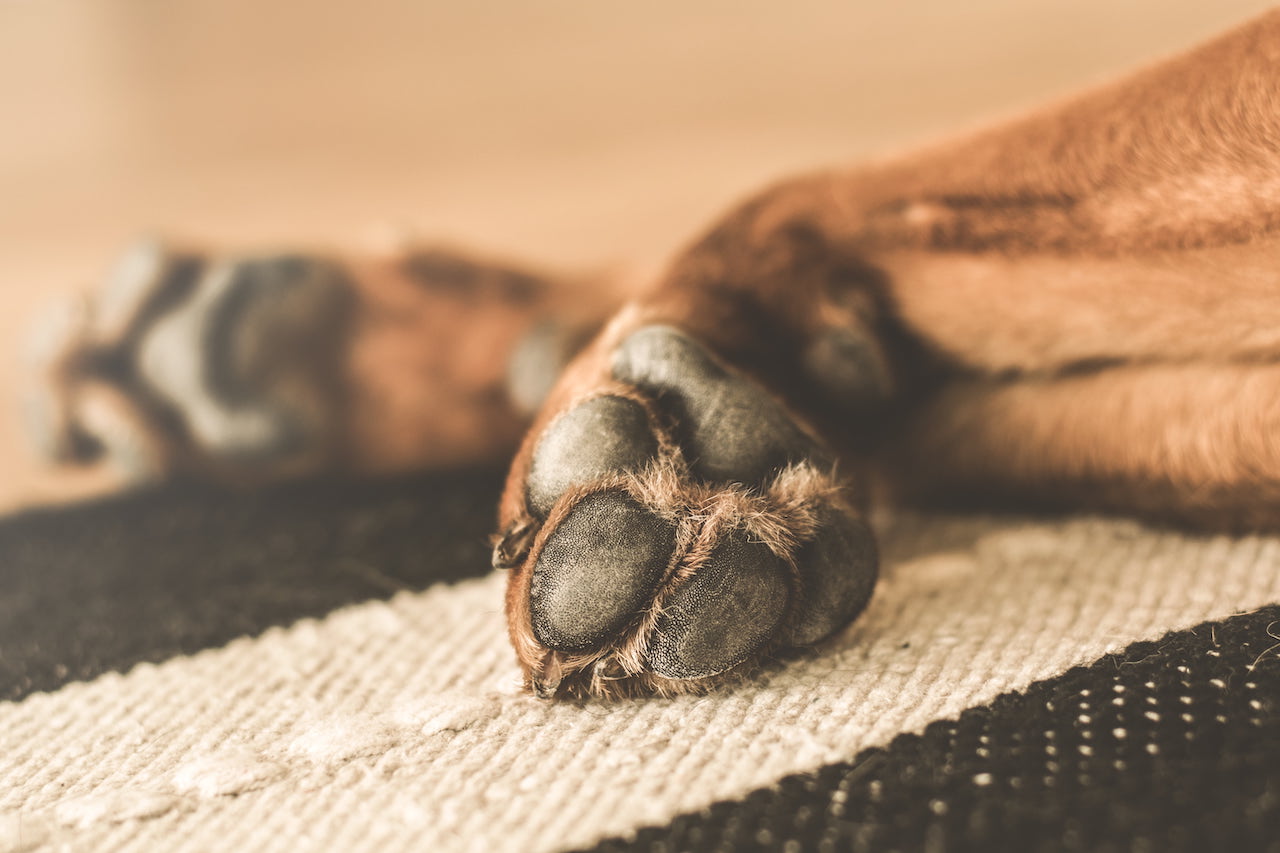
Joint Infections
Bacterial or viral infections can cause joint inflammation. If left untreated, this inflammation can develop into arthritis.
Malnutrition
A diet missing key nutrients can harm joint health and how well joints work.
Cartilage Deficits
Some dogs have weaker cartilage to begin with, which makes their joints more likely to wear down. We’ll get back to that later.
Orthopedic Surgery
Dogs that have orthopedic surgery can develop arthritis in those joints because surgery can change how the joint moves and handles stress.
poor conformation
Dogs with poor conformation, like misaligned limbs, are more likely to develop arthritis because their joints take uneven weight and stress.

Arthritis in Dog Breeds
Breeds at Higher Risk
Some breeds have a higher risk of arthritis due to genetics, especially larger dogs like [6]:
🐾 Labrador Retriever, often with hip and elbow dysplasia
🐾 German Shepherd, prone to hip dysplasia and joint problems
🐾 Golden Retriever, at risk for hip dysplasia
🐾 Dachshund, prone to spinal arthritis from disc disease
🐾 Rottweiler, likely to get hip and elbow dysplasia
Mixed-Breed Dogs
Mixed-breed dogs can get arthritis, too. Their risk depends more on size, age, and inherited genes than breed alone.
Here’s how risk breaks down:
🐾 Larger mixed breeds face more joint stress and higher arthritis risk.
🐾 Older mixed breeds, like purebreds, are more likely to develop arthritis.
🐾 Those with ancestors prone to hip or elbow dysplasia may inherit those issues.
A 2013 study showed mixed breeds have fewer inherited joint problems like hip dysplasia than purebreds, which might lower their arthritis risk overall. Still, arthritis becomes more common as they get older [7].
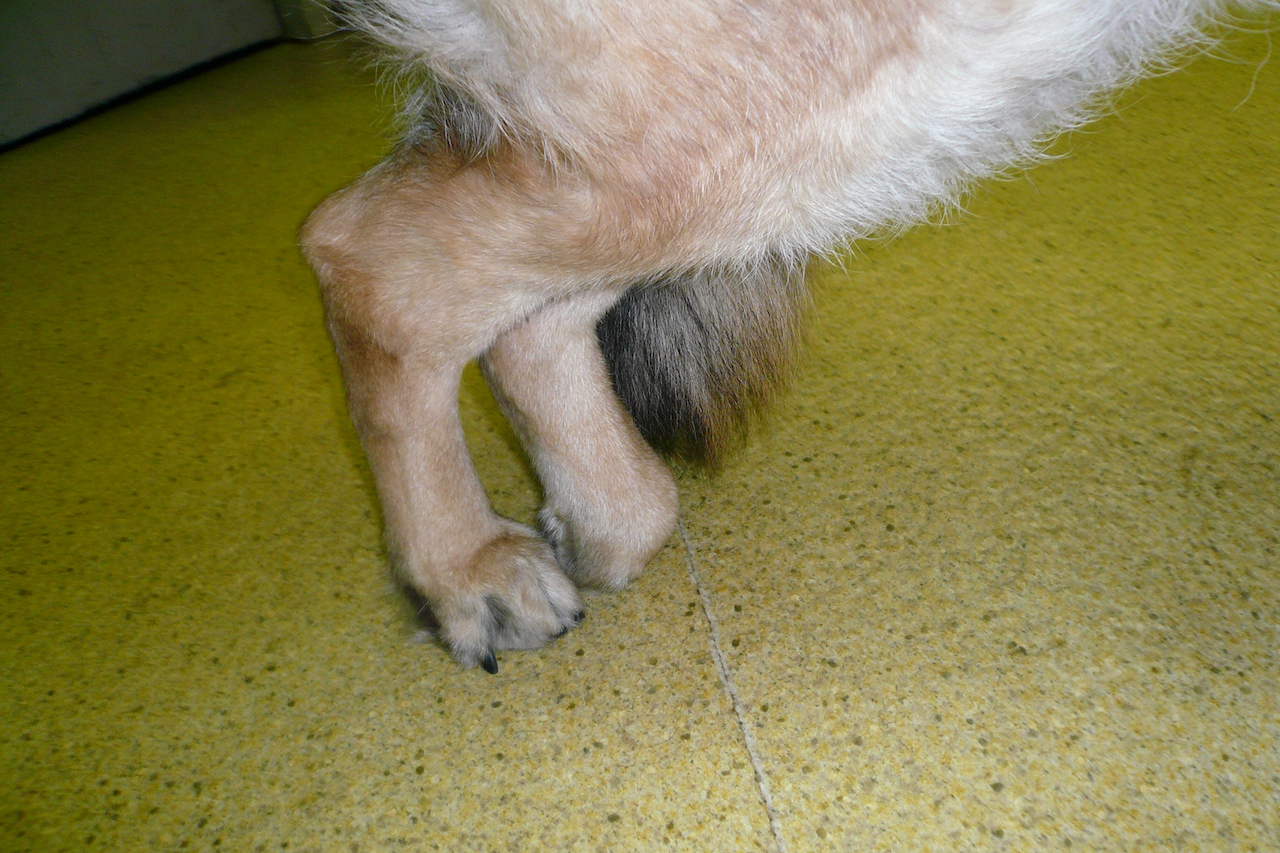
Recognizing the Symptoms and signs of arthritis in dogs
Arthritis in dogs shows up through different signs that impact how they move, act, and feel overall. Spotting these early helps manage the condition better.
Mobility Issues
🐾 Limping or favoring one leg is often the first sign.
🐾 Stiffness or trouble moving, especially after resting, shows up next.
🐾 Their walk might slow down and look shuffled.
🐾 Getting up from lying or sitting can become a struggle.
🐾 Reluctance to jump or climb stairs due to pain is common.
🐾 Many avoid stairs to dodge the pain.
🐾 Overall, they may move less and seem less interested in play.
Behavioral Changes
🐾 Less interest in playing, running, or being active.
🐾 More grumpy or irritable, especially when touched.
🐾 Whining or groaning that shows discomfort, often when moving.

Physical Symptoms
🐾 Licking or chewing at painful joints to ease discomfort.
🐾 Fur stained from constant licking around those areas.
🐾 Shaking or trembling caused by joint pain.
🐾 Stiff joints, especially noticeable when the dog moves.
🐾 Visible muscle atrophy in legs from reduced activity.
🐾 Muscle loss near affected joints from less use.
🐾 Swelling that makes joints look bigger than usual.
🐾 Pain when touching or moving the joints.
🐾 Stiffness, often worse after resting or in cold weather.
Changes in Daily Habits
🐾 Less interest in food, often linked to ongoing pain.
🐾 Trouble with toileting, like squatting or lifting a leg.
🐾 Changes in posture or how they walk compared to normal.
🐾 Weight gain from moving less and possibly eating more for comfort.
🐾 Poor diet can make joint problems worse.
🐾 Sleeping more or acting tired because of pain and fatigue.

🐾 Progression of dog Arthritis
Osteoarthritis in dogs usually develops through four stages.
Stage 1: Early Stage
Symptoms: Mild discomfort and occasional stiffness, mostly after resting for a long time.
Characteristics: Early cartilage wear with minor inflammation.
Stage 2: Mild Arthritis
Symptoms: Stiffness becomes more obvious, activity drops, and slight limping shows up, especially after exercise.
Characteristics: Cartilage damage increases, with mild inflammation in the joint lining.
Stage 3: Moderate Arthritis
Symptoms: Ongoing pain, clear lameness, and trouble with daily tasks like stairs or jumping.
Characteristics: Cartilage breaks down more, inflammation grows, and bone spurs may form.
Stage 4: Severe Arthritis
Symptoms: Intense pain, major lameness, unwillingness to move, and a big drop in mobility.
Characteristics: Severe cartilage damage, large bone spurs, and heavy inflammation.
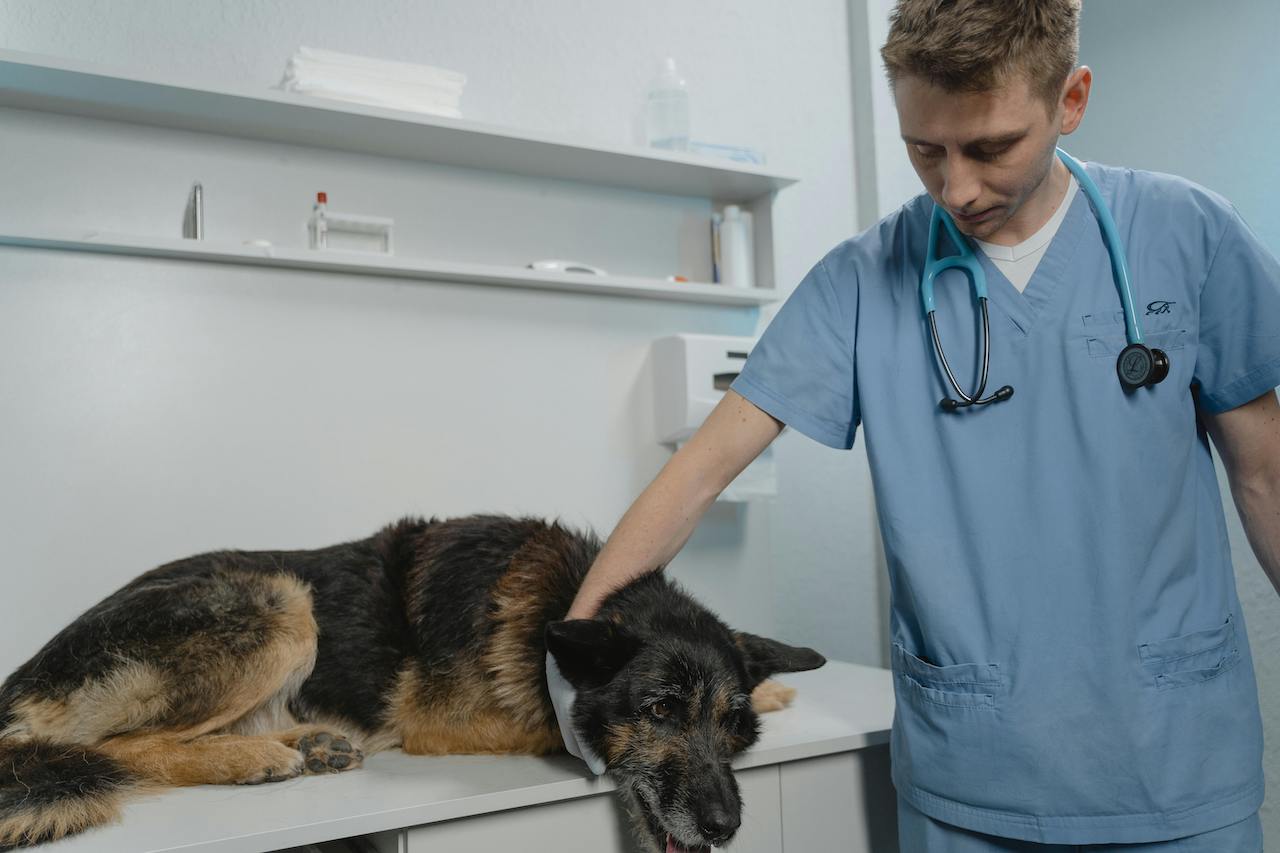
Dog Arthritis Diagnosis
Catching arthritis early in dogs is important to manage it well. Diagnosis usually combines a physical exam with imaging tests.
Veterinary Examination
Veterinarians check for arthritis by:
🐾 Feeling joints for swelling, heat, or pain
🐾 Observing how the dog walks, sits, and lies down to spot any issues
Imaging tests
X-rays are often used to spot arthritis in dogs. They show:
🐾 Changes in bone shape and density
🐾 Signs of inflammation and fluid in the joints
For a closer look, vets might use:
🐾 MRI to see soft tissues and catch early cartilage damage
🐾 CT scans to get cross-sections of joints and spot small bone or alignment problems
Joint Fluid Analysis
This test takes fluid from the joints to check for signs of inflammation or infection, helping confirm arthritis.
Veterinary Treatment
Once arthritis is diagnosed, treatment aims to reduce pain and improve joint function. Vets usually prescribe medication and provide advice for care at home. Common treatments include:
Medications
Non-steroidal anti-inflammatory drugs (NSAIDs) are commonly prescribed to manage pain and inflammation, reducing swelling and improving the dog's mobility and comfort. For more severe inflammation, steroids might be prescribed to provide relief. See table herunder.
Surgical Interventions
Non-steroidal anti-inflammatory drugs, or NSAIDs, are often used to control pain and inflammation, helping reduce swelling and improve movement. For more severe cases, steroids may be given for relief. See the table below.

COMPARISON TABLE OF OSTEOARTHRITIS MEDICATIONS FOR DOGS
| Treatment Type | Approval Status | Mechanism of Action | Indication | Administration | Most Common Side Effects |
|---|---|---|---|---|---|
| Anti–Nerve Growth Factor Monoclonal Antibody (Bedinvetmab; Librela) | Approved by FDA in May 2023; Canada (2023); various countries starting in 2020 | Targets and neutralizes NGF, reducing pain generation in osteoarthritic joints. | Alleviation of pain associated with OA in dogs | 0.5 to 1 mg/kg SC once a month | Mild reactions at the injection site in ≤1% of dogs |
| NSAIDs for Dog Arthritis: First-Line Pain Management | Carprofen (1996), deracoxib (2002), meloxicam (2003), firocoxib (2004), grapiprant (2016) | Carprofen, deracoxib, meloxicam, and firocoxib block COX-1 and COX-2 enzymes. Grapiprant blocks EP4 receptor, sparing COX enzymes' homeostatic roles. | OA pain relief | All are q24h PO; carprofen also q12h dosing. Injectable formulations available. | Gastrointestinal upset (e.g., vomiting, diarrhea); less common are gastrointestinal ulceration and renal and hepatic adverse effects. |
| Polysulfated Glycosaminoglycan (Adequan Canine) | U.S. FDA approved (2014) | Inhibits catabolic enzymes in inflamed joints, increases synthesis of proteoglycan and hyaluronic acid, potentially decreasing cartilage loss and providing analgesia. | Control of signs associated with noninfectious degenerative and/or traumatic arthritis of canine synovial joints | 4.4 mg/kg IM twice weekly for up to 4 weeks (max 8 injections). Often repeated as needed. | Mild and self-limiting transient pain at the injection site, transient diarrhea, and bruising. |
| Gabapentin/Pregabalin | No approval for veterinary use in the United States | Presynaptic inhibition of calcium channels, decreasing calcium influx and release of excitatory neurotransmitters. Anxiolytic effects can also decrease pain intensity. | Potential adjunctive drug for chronic pain relief | Gabapentin: q8h to q12h PO; starting dose 10 mg/kg up to 40 mg/kg. Pregabalin: 1 to 2 mg/kg PO q12h. | Sedation (resolves within days), ataxia (more common in large dogs, may resolve with decreased dosing). |
| NMDA-Receptor Antagonists (Amantadine, Ketamine) | Amantadine: not approved for veterinary use in the U.S.; Ketamine: approved as an injectable anesthetic in cats and subhuman primates in the U.S. | NMDA-receptor antagonists block the channel, decreasing central sensitization. | Potential adjunctive drug for acute or chronic pain relief, particularly if central sensitization is predicted | Amantadine: 3 to 5 mg/kg PO q12h to q24h. Ketamine: 5 to 10 µg/kg/min acute infusion for 4 to 24 hours; 0.5 mg/kg SC weekly or less often. | Sedation or agitation (rare). |
| Homogeneous Tin Colloid (117mSn; Synovetin OA) | Medical veterinary device | Tin colloid emits low-energy electrons absorbed by synovial cells and macrophages, reducing inflammatory cells and synovial inflammation and pain. | Intra-articular treatment of elbows in dogs to reduce synovitis and OA pain | Dogs must be anesthetized or deeply sedated during injection. Redosing no sooner than 12 months after last treatment. | Pain at the joint during and up to 72 hours after treatment (uncommon). |
| Collagen/Elastin Matrix (Spryng) | Medical veterinary device | Mimics natural cartilage, restoring joint mechanics and decreasing pain. | Management of joint pain from loss of cartilage or tissue-bone mechanical malfunction | Intra-articular sterile injection. Multiple joints can be injected in one appointment; repeat as needed. | Mild, short-term swelling at the injection site. |
Source: Today's Veterinary Practice [8]
Advancements in ARTHRITIS treatment options
Veterinary medicine is changing fast, opening up new treatment options for arthritis in dogs. Staying updated helps you provide better care.
Recent advances include more drugs like NSAIDs, piprants, monoclonal antibodies, pain relievers, joint-protecting medications, and regenerative therapies. Librela for dogs, an FDA-approved monoclonal antibody, shows promise for long-term pain relief. These reflect growing knowledge about arthritis and pain in dogs [9].
Beyond the latest research, here are two key developments in canine arthritis treatment:
Nerve Growth Factor (NGF) Inhibitors
Research on anti-NGF therapy shows promise for easing pain in dogs with osteoarthritis. This treatment received FDA approval in 2023. [10].
Studies show this therapy works well and is tolerated for up to three months. One injection can ease pain for four to six weeks [11]. It often matches or beats NSAIDs and provides a non-opioid choice for pain relief. Costs usually run under $100 a month, depending on the dog’s weight.
Stem Cell Therapy
Stem cell therapy injects stem cells straight into the joints. It can ease pain, improve movement, and help heal injured tendons and ligaments in dogs with osteoarthritis. Cornell College of Veterinary Medicine notes stem cells may reduce inflammation [12].
The cost usually falls between $2,000 and $3,000, depending on the vet’s experience, the dog’s condition, and how many injections are needed.
Innovative Trends in Managing Dog Arthritis

The pet health industry has changed a lot recently as owners focus more on their pets’ overall well-being.
This shift drives new technologies and changing habits, especially in managing chronic issues like arthritis.
Preventive care now includes regular vet visits and telemedicine, supported by apps and wearable trackers that keep owners updated on their dog’s health.
Personalized nutrition is growing too, with supplements like glucosamine and omega-3s becoming common. Alternative therapies like acupuncture and light therapy also help relieve arthritis pain and inflammation. Here’s a closer look at these trends:
Preventive Care
Here’s a clear summary of ways to prevent or slow arthritis in dogs:
🐾 Regular vet check-ups catch joint problems early.
🐾 Maintaining a healthy weight lowers joint stress.
🐾 Low-impact exercise keeps joints moving and muscles strong, even after injuries.
🐾 Balanced diet and supplements like glucosamine support joint health.
🐾 Comfortable bedding and ramps ease joint strain.
🐾 Breed-specific prevention, such as hip screenings for Labs, helps address genetic risks.
Wearable Technology for Pet Health Monitoring
Portable monitors have changed how we care for pets. Devices like FitBark, Felcana, Whistle, and PetPace attach to your dog’s collar and sync with your phone or watch [14].
They track vital signs, activity, sleep, and more, helping spot health issues early. You can also share this data with your vet for better care.
Personalized nutrition
Keeping your dog at a healthy weight and feeding a nutrient-rich diet play key roles in managing arthritis. Extra weight puts more pressure on joints, making arthritis worse.
A balanced diet supports joint health with:
🐾 Glucosamine and chondroitin, which help repair cartilage and keep it flexible [15].
🐾 Omega-3 fatty acids from fish oils, known for reducing inflammation and pain.
🐾 Bone broth, which provides collagen and nutrients that protect joints.
🐾 Herbs like turmeric and Boswellia, plus natural supplements like deer velvet, all known for their anti-inflammatory effects.
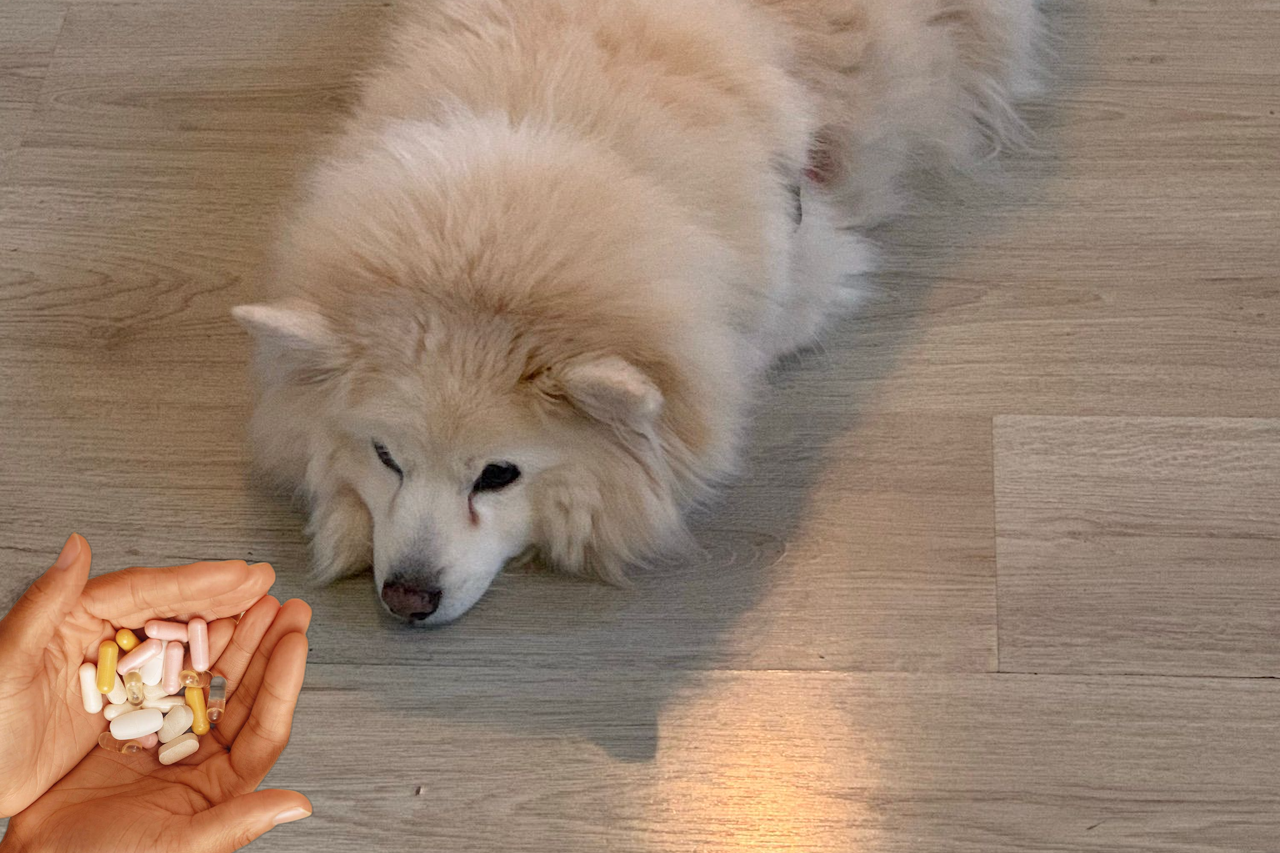
Veterinary Physical Rehabilitation Therapies
As pet care evolves, physical rehabilitation clinics for dogs are on the rise.These clinics provide treatments aimed at improving joint health, building muscle strength, and easing pain. They also help with cartilage, tendon, and ligament health. The most common therapies for arthritis in dogs include:
Range of Motion Exercises
These exercises focus on improving balance, strength, and joint flexibility, tailored to the dog’s ability and condition. They can be passive or active depending on the severity of the dog’s arthritis.
🐾 Passive Range of Motion (PROM)
Performed by a certified therapist, these gentle movements help keep joints mobile, especially in dogs unable to move on their own due to pain.
🐾 Active-Assisted and Active Range of Motion
Active-assisted ROM guides the dog’s joint movement, helping them use their muscles partially. Active ROM requires the dog to fully engage their muscles for maximum joint mobility. At-home exercises, like walking through water or sand, may also be recommended.
Costs for range of motion therapy vary. A single session can range from $50 to $75, and the full treatment period may cost between $500 and $1,500.

Massage
Massage therapy can be a game-changer for dogs with arthritis, easing pain and improving their overall comfort.It helps relaxation, lowers stress, and increases circulation, which nourishes joints and removes toxins.
Massage also targets muscle tension, increases flexibility, and relieves stiffness and soreness common in arthritic dogs. Sessions typically cost between $35 and $50.
Acupuncture and acupressure
Acupuncture for dogs is rooted in traditional Chinese medicine, which believes that illness results from imbalances in the body’s vital energies. Fine needles are inserted into specific points on the dog’s body, called acupuncture points or meridians. This helps restore balance and aids healing.
This technique improves blood flow, stimulates the nervous system, and triggers the release of natural anti-inflammatory and pain-relieving substances. For dogs that don’t tolerate needles, acupressure and laser acupuncture provide similar benefits.
These therapies can reduce the need for pain medications and complement other treatments. Acupuncture sessions typically cost between $25 and $300.
Hydrotherapy
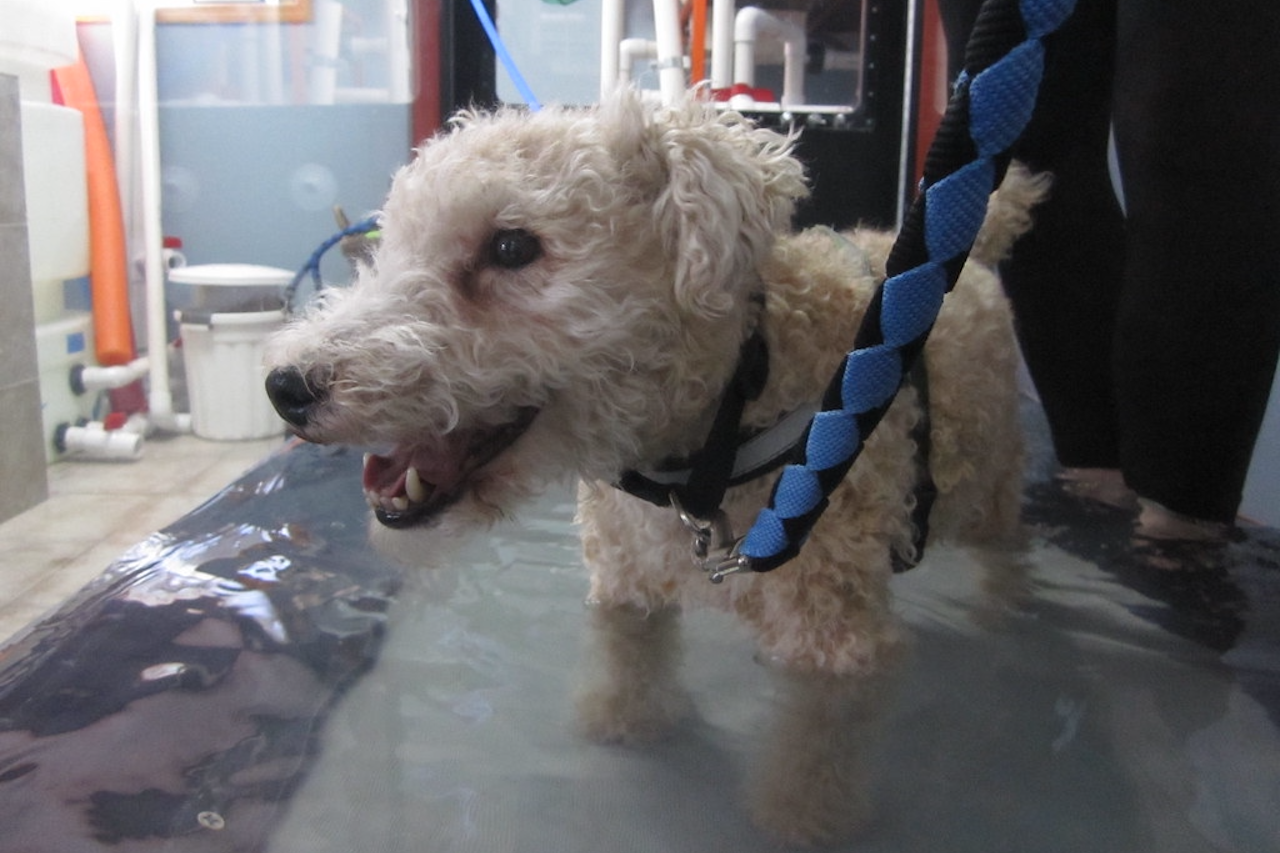
Hydrotherapy uses water exercises to ease pain in dogs with arthritis. It also helps the healing process. The natural properties of water like buoyancy and resistance help improve joint mobility and reduce swelling without putting stress on the joints. Qualified therapists often use specialized equipment to target specific areas. Veterinary studies report hydrotherapy for canine arthritis improves mobility by 40 percent [17].
Costs typically range from $35 to $45 for an initial consultation, with swim therapy sessions running about $20 to $30 and underwater treadmill sessions costing between $35 and $50.
Laser therapy

Low-Level Laser Therapy (LLLT), or Red Light Therapy, uses light to stimulate cell regeneration and improve circulation. It’s effective for reducing pain and inflammation linked to arthritis and musculoskeletal issues. The therapy usually involves a laser wand being applied to the affected area for 10 to 20 minutes [18].
Dogs often find the treatment calming, and it can help reduce pain, improve mobility, and decrease reliance on medications. Initially, multiple sessions are needed, but the frequency tends to decrease over time based on how the dog responds. Treatment typically costs between $40 and $100 per session.
Ultrasound therapy
Ultrasound therapy uses sound waves to help tissue heal, reduce inflammation, and relieve pain. The treatment involves applying conductive gel to the affected area and using a probe to move in circular motions for 5 to 15 minutes per session [19].
Prices can vary, but a typical 60-minute session may cost between $66 and $125.
Electric therapy
Neuromuscular Electrical Stimulation (NMES), or Transcutaneous Electrical Nerve Stimulation (TENS), uses electrical currents to stimulate nerves and muscles, helping to reduce pain, promote healing, and improve muscle function. The therapy involves placing electrode pads on the skin with a conductive gel.
Lower-frequency TENS targets sensory fibers for pain relief, while higher-frequency NMES stimulates motor fibers to strengthen muscles, especially beneficial for dogs with muscle weakness [20].
TENS is often used during rehabilitation for pain management, though some hair might need to be shaved for proper electrode placement. The cost of this treatment typically ranges from $35 to $200 per session, depending on the provider and treatment duration.

Recent research in 2022 highlights a critical gap in evidence-based guidelines for managing osteoarthritis in dogs [21].
Similar to human medicine, there is a growing need for standardized, scientifically backed strategies to improve care.Many veterinary studies currently focus on short-term outcomes without control groups. This limits their ability to provide definitive conclusions about the long-term effectiveness and cost-efficiency of treatments.
The research emphasizes the need for additional studies that can establish optimal treatment protocols, assess the long-term efficacy of various interventions, and improve adherence to physiotherapy plans. This will help refine the approach to managing canine osteoarthritis and ensure that treatments are both effective and sustainable.
Therapies at home - DIY
Veterinary treatments can add up, especially when they're needed frequently or over a long period. That's why in-home therapy is worth considering. Not only is it more affordable, but it also helps reduce the stress your pet might feel in an unfamiliar environment, which could make their pain worse.
Let's look at how you can support your dog's recovery and pain relief at home.
Passive Range of Motion
Passive range of motion (PROM) exercises are a simple yet effective way to support your dog's joint health and reduce discomfort. The idea is to move their joints gently through their full range of motion without requiring them to use their muscles.
PROM can help keep joints flexible, tone muscles for better support, improve circulation, and encourage natural pain relief through endorphins [22]:
Here’s how to do it at home:
- Start with a light massage and a short walk to warm up.
- Pay attention to any signs of discomfort and stop if needed.
- Support the entire limb to avoid stressing individual joints.
- Move the joints slowly and smoothly.
- Start with a few reps and gradually increase.
- Aim for two to three sessions a day for the best results.
You can also find videos and guides online to help you perform different ROM exercises based on your dog’s needs.
Cryotherapy (cold therapy)
Cold therapy is an easy and affordable way to help with minor skin irritations and bring relief to your dog. It's especially useful for acute injuries, flare-ups, or recovery after surgery, as it helps reduce inflammation and speed up healing. It’s also great for chronic conditions like osteoarthritis, particularly when your dog’s joints feel warm.

You can easily apply cold therapy at home using ice packs. While there are plenty of options available online, you can also make your own with a bag of frozen peas, corn, or a vegetable mix. Just slip it into a small pillowcase. Alternatively, wrap some ice in a paper towel or towel and place it in a plastic bag.
Always place a damp towel between the ice pack and your dog’s skin to avoid ice burns. Apply the ice pack for 20 minutes, two to four times a day, depending on your dog's comfort level.
Heat therapy
Heat therapy can be helpful for dogs dealing with pain, joint stiffness, and muscle spasms. It works well for chronic conditions like osteoarthritis by improving blood flow, delivering nutrients and oxygen, and helping remove toxins. You can use tools like hot packs, heat wraps, towels soaked in hot water, or even warm water applications at home.
Apply heat for 15 to 20 minutes to the affected area, keeping the temperature between 40 to 45°C to avoid burns. Always check your dog’s skin to ensure it’s comfortably warm. If your dog seems uncomfortable, don’t force it. You can use heat therapy up to three times a day, especially helpful in colder weather.
Combine warmth with weight management. Keeping your dog lean reduces joint stress.
For best results, combine heat therapy with massage and stretching to help your older dog manage pain and improve mobility. Avoid using heat right after surgery, during a flare-up, or on acute injuries.
Massage
Gentle massages can help improve blood flow to sore joints. Massaging before a walk can warm up your dog’s muscles and improve circulation, making physical activity easier and reducing the risk of injury. After a walk, a light massage can relax muscles and joints, easing any stiffness or tension from exercise.
You can find helpful guides and videos online to get the technique right [23]. But in the end, it's about creating a routine of care and touch that you and your dog both enjoy.

Exercises for your dog
Exercising a dog with osteoarthritis requires finding the right activities for their condition. Start by talking to your vet to create a customized exercise plan based on which joints are affected and the severity of the arthritis. Introduce new exercises slowly to prevent discomfort or injury, focusing on gentle, low-impact activities that won’t put too much strain on their joints.
Here are some options to consider:

🐾 Walking: Start with short walks on flat, smooth surfaces and gradually increase the time and distance as your dog gains strength.
🐾 Swimming: The buoyancy of water helps reduce joint pressure, making movement easier. If your dog’s new to swimming, start slow or consider using an underwater treadmill for controlled water exercises.
🐾 Stretching: Focus on light stretches to keep flexibility, particularly around the hips and knees.
🐾 Treadmill: Use with care and under guidance, making sure it suits your dog’s size and gait. Gradually adjust the speed and incline as needed.
🐾 Indoor Games: Keep your dog mentally and physically active with games like hide-and-seek or interactive toys, modifying them based on your dog’s comfort and mobility [24].
The home therapies we've talked about so far require your active involvement. However, if you're time is limited you could think of home healing devices with red light or PEMF therapy. While they might require some upfront cost, they’re still more affordable than frequent vet visits. So, what do these therapies involve, and which one is more effective for arthritis?
Red light therapy (RLT)
Red Light Therapy (RLT) uses specific wavelengths of red or near-infrared light, typically between 600 and 900 nanometers, to penetrate tissues and support healing. The light reaches about 5–10 millimeters beneath the skin, affecting muscles, nerves, and even deeper bones. It’s known for reducing inflammation, speeding up wound healing, and easing pain.
A 2018 study on dogs with elbow osteoarthritis showed that 6 weeks of RLT significantly reduced lameness and pain compared to a placebo. Dogs treated with RLT also needed lower doses of NSAIDs, suggesting that the therapy alone helped manage pain effectively [25].
Some popular home RLT devices include:
🐾 Handheld devices - These devices are easy to use and great for targeting specific areas. They usually cost between $200 and $400, are portable, and have pre-set treatment programs.
🐾 Therapy pads - These pads cover larger areas and range from $150 to $300. These pads come with settings for both deep tissue and surface treatments.

Pulsed Electromagnetic Field (PEMF) Therapy
PEMF therapy uses electromagnetic fields to stimulate cellular repair and improve circulation. It passes through fur, skin, bandages, and bone, reaching deep into muscles and joints to support healing.
It is often used to manage pain from conditions like osteoarthritis and to help improve mobility. Studies show it can reduce pain and stiffness in dogs with arthritis [26, 27].
At-home PEMF options include loops, mats, and dog jackets. Mats are convenient since your dog can lie down and get therapy as needed. Prices range from $200 to over $2000 depending on the brand, size, settings, and features. Some are also available to rent. PetsPEMF makes mats designed specifically for dogs. 👉 Petspemf Pad Reviews
Our blog post 'PEMF Therapy for Dogs: Ease Pain and Improve Movement' takes a closer look at the science behind PEMF therapy, how it works, and what research says about its effects.
PEMF vs RTL
Both Red Light Therapy and PEMF therapy can help support your dog’s health in different ways.
🐾 RLT improves blood flow and supports cell activity. It’s especially helpful for muscle recovery and easing inflammation.
🐾 PEMF reaches deeper tissues to support cellular repair and regeneration. It’s often used to manage pain and improve mobility, especially in dogs with osteoarthritis.
Used alone or together, both therapies can make a real difference in your dog’s comfort and quality of life. For best bedding for arthritic dogs, use orthopedic foam to ease pressure points.

🐾 PETSPEMF Pad Reviews For Dog Health And Well-being
Personal Stories of Dog Owners
🐾 Sonny and Nicky

Richard Suddon, 54, is a software engineer living in Seattle, WA, with his two Rhodesian-German mix dogs, Sonny (8) and Nicky (5). After years of high-energy play, Sonny was recently diagnosed with arthritis in his spine. To manage it, Richard gives him omega-3 supplements and takes him for regular acupuncture.
"When Sonny was diagnosed, I wanted to make sure he received the same level of care that I give myself," Richard says.
He’s noticed clear improvements in Sonny’s comfort and movement. "Acupuncture and supplements have been game-changers for Sonny.” Nicky hasn’t been diagnosed with arthritis but still shares in the same routine. "It has become a family routine."
🐾 Max

Jane Thompson from Austin, TX, began noticing that her 8-year-old Golden Retriever, Max, was having trouble getting up and walking. A vet visit confirmed that Max had hip osteoarthritis.
Jane also lives with arthritis in her knees, which made Max’s condition hit especially close to home.
"Seeing Max in pain was heartbreaking," Jane shares. "I know how tough it is to deal with arthritis, so I made it my mission to help him feel better."
They started doing low-impact exercises together, which helped both of them move more comfortably. Jane now takes daily walks with Max to keep him active and manage his weight.
"Our walks are therapeutic for both of us," she adds. "It’s a way for us to bond and stay healthy together."
🐾 Tyke

Chrissie West, 46, a psychiatrist in Miami, FL, first noticed something was wrong when her American Eskimo, Tyke, started limping and avoiding stairs at eight years old.
A veterinary exam confirmed Tyke had knee osteoarthritis. His treatment included stem cell therapy, which eased his pain and improved his mobility. Now 14, Tyke is still active and enjoying life.
"Tyke's limp broke my heart," Chrissie recalls. "We’ve always been so active together, and I wanted to find a solution that would give him relief."
Chrissie also lives with chronic fatigue syndrome and follows a similar routine of supplements and physical therapy. They walk together every day, supporting each other’s health and routine. "We motivate each other to keep moving," she says.
The best advice for arthritis in dogs
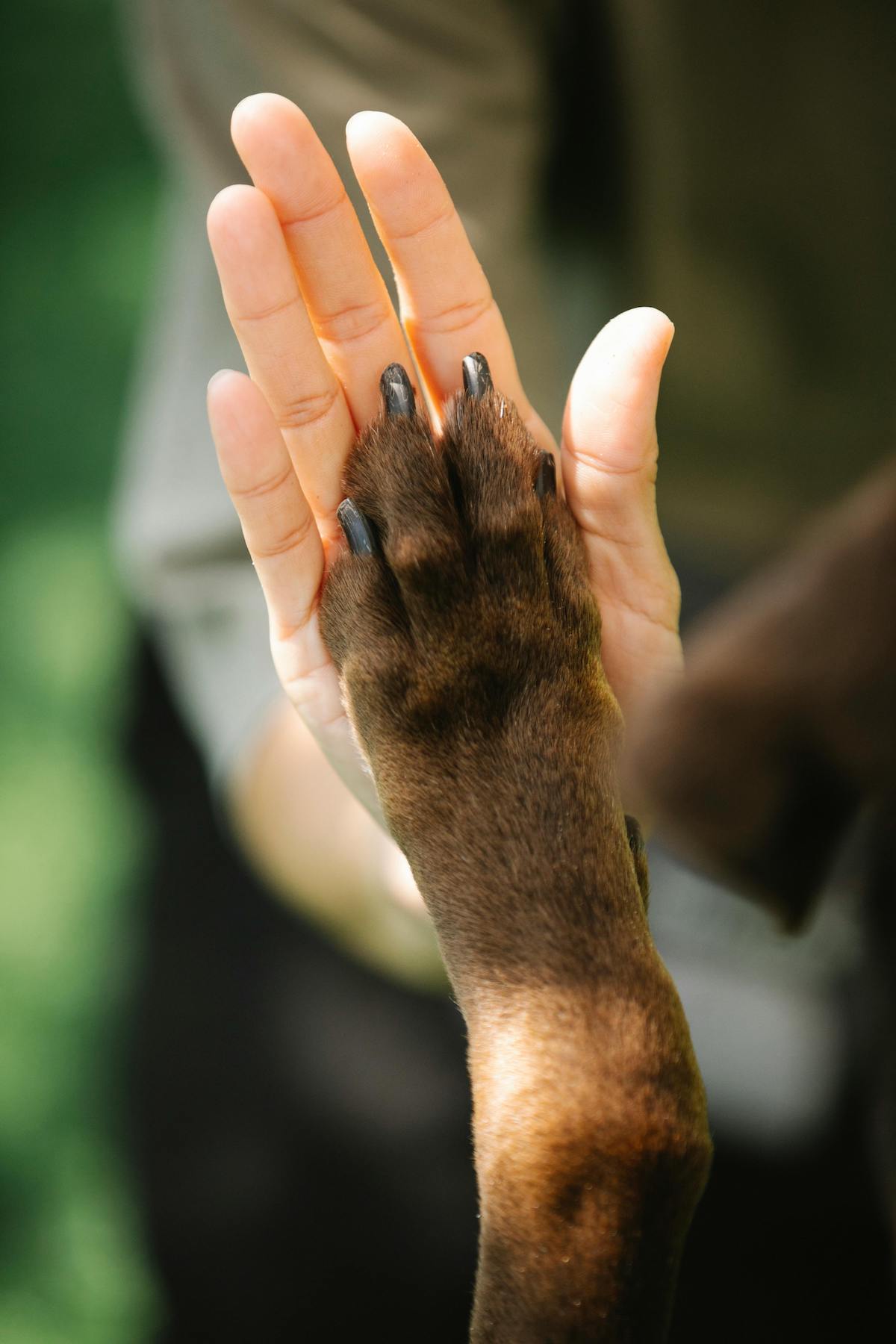
People often ask me what the best way is to help a dog with arthritis. The truth is, there’s no single answer. Like Jane, Richard, and Chrissie, it’s about finding what works for you and your dog.
Take your time to research and look at different options. Many owners combine several approaches. It doesn’t have to be one or the other. I hope this article has helped you feel more confident in making choices that fit your situation.
I’d love to hear your story. If you’d like to share what’s helped your dog, send me a message. It helps me write better content and support other dog owners who are looking for answers.
Saunace.com publishes reviews and usage guides for infrared and PEMF devices to help readers compare options and use them safely; see the About page to learn how we research and evaluate products.
Saunace is supported by its audience. When you purchase through links on our website, we may earn an affiliate commission. Learn more.

Sam Everhart
Updated: August 2025
References
1. Ryan Llera and Robin Downing, Arthritis in Dogs, VCA Animal Hospitals, https://vcahospitals.com/know-your-pet/arthritis-in-dogs
2. Wright A, et al., Identification of canine osteoarthritis using an owner-reported questionnaire and treatment monitoring using functional mobility tests. J Small Anim Pract. 2022 Aug;63(8):609-618. doi: 10.1111/jsap.13500. Epub 2022 Apr 6. PMID: 35385129; PMCID: PMC9543207. https://pubmed.ncbi.nlm.nih.gov/35385129/
3. Wag! Immune-Mediated Poly-Arthritis in Dogs, WagWalking.com, https://wagwalking.com/condition/immune-mediated-poly-arthritis
4. SVS, Understanding the Different Types of Canine Arthritis, Simonvetsurgical.com https://www.simonvetsurgical.com/news/understanding-the-different-types-of-canine-arthritis
5. Anderson KL, Zulch H, O'Neill DG, Meeson RL, Collins LM. Risk Factors for Canine Osteoarthritis and Its Predisposing Arthropathies: A Systematic Review. Front Vet Sci. 2020 Apr 28;7:220. doi: 10.3389/fvets.2020.00220. PMID: 32411739; PMCID: PMC7198754. https://www.ncbi.nlm.nih.gov/pmc/articles/PMC7198754/
6. S. Halperin, Dog Breeds Most Likely to Suffer from Arthritis & Symptoms, Stemcellvet, https://www.stemcellvet.co.uk/dog-arthritis-symptoms-dog-breeds-most-likely-suffer-arthritis/
7. Bellumori TP, et al., Prevalence of inherited disorders among mixed-breed and purebred dogs: 27,254 cases (1995-2010). J Am Vet Med Assoc. 2013 Jun 1;242(11):1549-55. doi: 10.2460/javma.242.11.1549. PMID: 23683021. https://pubmed.ncbi.nlm.nih.gov/23683021/
8. Tamara Grubb, Select Drugs and Compounds for Canine Osteoarthritis Management, in: Today's Veterinary Practice, https://todaysveterinarypractice.com/pharmacology/select-drugs-and-compounds-for-canine-osteoarthritis-management/
9. Pye C, et al., Advances in the pharmaceutical treatment options for canine osteoarthritis. J Small Anim Pract. 2022 Oct;63(10):721-738. doi: 10.1111/jsap.13495. Epub 2022 Mar 14. PMID: 35285032; PMCID: PMC9790257. https://www.ncbi.nlm.nih.gov/pmc/articles/PMC9790257/
10. U.S. Food And Drug Administration, FDA Approves First Monoclonal Antibody for Dogs with Osteoarthritis Pain, https://www.fda.gov/animal-veterinary/cvm-updates/fda-approves-first-monoclonal-antibody-dogs-osteoarthritis-pain
11. Enomoto M, et al., Anti-nerve growth factor monoclonal antibodies for the control of pain in dogs and cats. Vet Rec. 2019 Jan 5;184(1):23. doi: 10.1136/vr.104590. Epub 2018 Oct 27. PMID: 30368458; PMCID: PMC6326241. https://www.ncbi.nlm.nih.gov/pmc/articles/PMC6326241/
12. Amanda Gardner, Stem Cell Therapy for Pets, WebMD, Healthy Pets, https://www.webmd.com/pets/stem-cell-therapy-for-pets
13. AKC Canine Health Foundation, Don’t skip leg day: the importance of medial crural fascia when recovering from a TPLO, https://www.akcchf.org/educational-resources/Webinars/dont-skip-leg-day-the.html
14. Sharon M. Albright, Making Strides - Wearable Tech for Canine Athletes?, AKC Canine Health Foundation, https://www.akcchf.org/educational-resources/library/articles/making-strides-wearable.html
15. Earthborn Holistic, A Guide to Glucosamine and Chondroitin for Dogs, Pet Nutrition, https://www.earthbornholisticpetfood.com/blog/pet-nutrition/guide-to-glucosamine-and-chondroitin-for-dogs/
16. Krista Williams, Acupuncture/Acupressure for Dogs, VCA Animal Hospitals, https://vcahospitals.com/know-your-pet/acupuncture-acupressure-for-dogs
17. Tampa Bay K-9 Rehabilitation, Hydrotherapy for Dogs With Arthritis, https://www.tbk9rehab.com/blog/hydrotherapy-for-dogs-with-arthritis
18. AKC Canine Health Foundation, Laser Therapy for Dogs, https://www.akcchf.org/canine-health/your-dogs-health/caring-for-your-dog/laser-therapy-for-dogs.html
19. Ortocanis Technical Team, Applying Therapeutic Ultrasound in Dogs, OrtoCanis, https://www.ortocanis.com/en/content/applying-therapeutic-ultrasound-in-dogs
20 ReHabVet, Electrical Therapy (TENS &NMES) for Dogs and Cats, https://rehabvet.com/modalities/electrical-therapy-tens-nmes-dogs-and-cats/
21. Mille MA, McClement J, Lauer S. Physiotherapeutic Strategies and Their Current Evidence for Canine Osteoarthritis. Vet Sci. 2022 Dec 21;10(1):2. doi: 10.3390/vetsci10010002. PMID: 36669003; PMCID: PMC9863568. https://www.ncbi.nlm.nih.gov/pmc/articles/PMC9863568/
22. PawsforPaws, Keeping Your Dog’s Joints Happy: How Passive Range-of-Motion Exercises Help Dogs with Arthritis, https://paws4paws.com.au/keeping-dog-joints-happy-how-passive-range-of-motion-exercises-help-dogs-with-arthritis/
23. Joe Mallet, How to Massage a Dog with Arthritis: 6 Expert Tips (Vet Answer), Dogster, https://www.dogster.com/dog-health-care/how-to-massage-a-dog-with-arthritis
24. Heather Berst, 6 Exercises for Dogs with Osteoarthritis, ZOETIS, https://www.zoetispetcare.com/blog/article/exercises-for-dogs-osteoarthritis
25. Looney AL, et al., A randomized blind placebo-controlled trial investigating the effects of photobiomodulation therapy (PBMT) on canine elbow osteoarthritis. Can Vet J. 2018 Sep;59(9):959-966. PMID: 30197438; PMCID: PMC6091142. https://www.ncbi.nlm.nih.gov/pmc/articles/PMC6091142/
26. Sprunks TE, et al., Pulsed shortwave electromagnetic field therapy increases quality of life in canines with symptoms of osteoarthritics. Vet Med Sci. 2024 May;10(3):e1408. doi: 10.1002/vms3.1408. PMID: 38516818; PMCID: PMC10958403. https://www.ncbi.nlm.nih.gov/pmc/articles/PMC10958403/
27. S. Pinna et al., The Effects of Pulsed Electromagnetic Field in the Treatment of Osteoarthritis in Dogs: Clinical Study. In: Pakistan Veterinary Journal 33(1):96-100. https://www.researchgate.net/publication/286970651_The_Effects_of_Pulsed_Electromagnetic_Field_in_the_Treatment_of_Osteoarthritis_in_Dogs_Clinical_Study